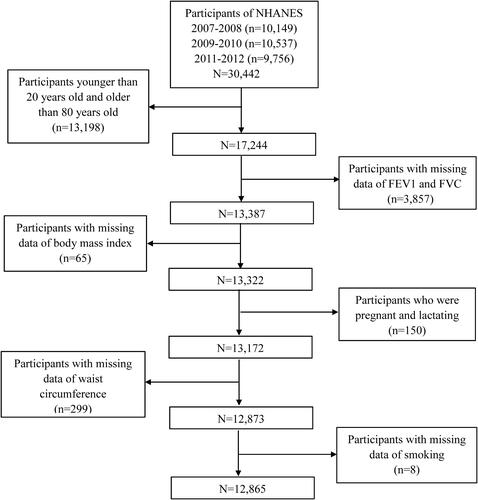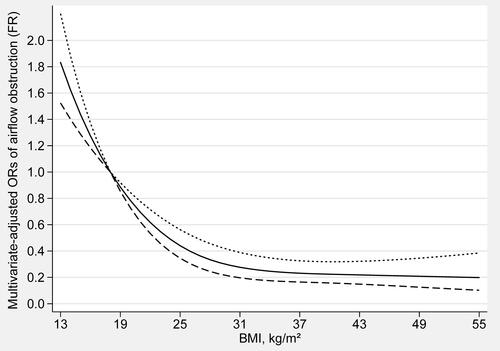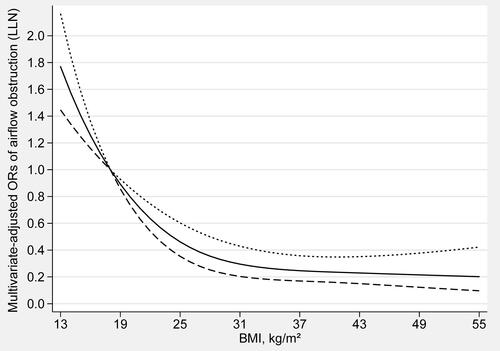Figures & data
Table 1. Characteristics of participants by airflow obstruction, NHANES 2007–2012, adults ≥20 years and ≤80 years of age.
Table 2. Weighted odds ratios (95% confidence intervals) of airflow obstruction across body mass index and smoking, NHANES 2007–2012 (N = 12,865).
Table 3. Weighted odds ratios (95% confidence intervals) of airflow obstruction across body mass index, stratified by sex and smoking, NHANES 2007–2012 (N = 12,865).
Table 4. Weighted odds ratios (95% confidence intervals) of airflow obstruction across abdominal obesity and body mass index, NHANES 2007–2012 (N = 12,865).
Table 5. Weighted odds ratios (95% confidence intervals) of airflow obstruction across abdominal obesity and stratified by sex and smoking, NHANES 2007–2012 (N = 12,865).
Table 6. Interaction effects between underweight and smoking.
Table 7. Interaction effects between abdominal obesity and smoking.



